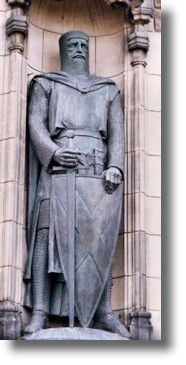
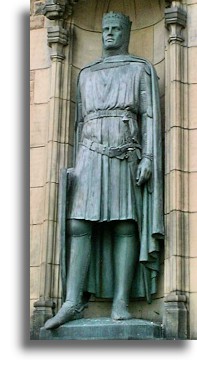
Scots History to 1400
By Michael Lynch
This is a section from the book "Scotland: a New History" by Michael Lynch which covers Scottish history from the earliest times to the present. There is an Index page of all the sections of the book up to the end of the 14th century which have been added to Rampant Scotland. The pages were previously part of the "Scottish Radiance" Web site.
Heirs of Ninian
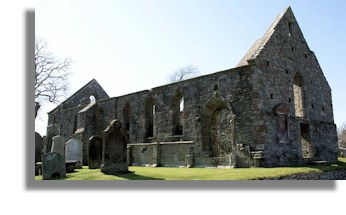
It was the seventh century which would also see the first revival of the cult of Ninian, but in the east rather than the west, for much of it was the product of a quite different mission that of the neo-Northumbrian Church. No doubt anxious to find or invent its spiritual roots and to placate local opinion, it gave to the first and third Anglian bishops of Whithorn, which it took over as a diocese in 710, the names of Pechthelm and Pechtwine, 'leader of the Picts' and 'friend of the Picts': personal names, as important to holy men as to early kings, allowed the arrivistes of the Northumbrian Church to claim that they were true successors of Ninian. (Graphic on the right is of the ruins of the nave of Whithorn Priory).
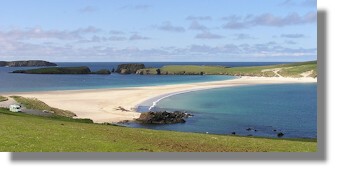
The considerable interchange between the Churches of Northumbria and southern Pictland from the 680s onwards was probably also significant in giving birth to a burgeoning cult of Ninian there. The medieval Church would, from the twelfth century to the very eve of the sixteenth, forge and reforge holy alliances of Celtic and continental European saints in a tradition which links Jocelyn of Fumess writing in the 1180s to the famous Breviary of Bishop Elphinstone of Aberdeen, compiled in 1506. The Pictish Church had done much the same fully 500 years before Jocelyn; by the time of the reign of Nechtan (706-24) the native cult of Ninian was being used to prepare the way for a new cult of St Peter, the symbol of its Roman party. Dedications to Ninian stood beside others to St Peter, especially in Angus and the Mearns and in Mar and Buchan. For almost eight centuries, until the time of the Aberdeen Breviary, churches at Restenneth and at Rosemarkie in Ross were linked with a legendary mission of a St Boniface as an apostle of Peter. Such churches were 'built after the Roman manner', in stone. But things are not always what they seem. For Boniface shared the saint's day of Curetán, an Irish bishop and abbot and colleague of Adomnán, abbot of lona a century after Columba. It may be that Curetán had been made to take on a Roman guise as Boniface: Celtic abbot became Roman saint. (The graphic on the left is of St Ninian's Isle in Shetland, via Wikimedia).
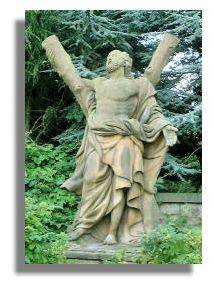
The point is a speculation, but it may illustrate that the Pictish Church had to cope with - as well as be able to exploit - the customs and saints of not one tradition but three: a Romano-British tradition which went back to Ninian, a new Roman cult of Peter, and the powerful, fast-growing reputation of Columba's Iona. By the eighth century a new, still more exotic addition would be added to the communion of saints of the Pictish Church - Andrew, the Apostle. (Picture in the right is a sculpture of St Andrew at the Botanic Gardens in St Andrews). A legend was cultivated that St Rule was told by an angel to take the relics of St Andrew to Scotland and they along with the relics of Columba would become the twin emblems of a Church of the Scots which would emerge out of the Church of the Picts. Much is often made of the clash which, as we shall see, would surface at the Synod of Whitby in 664 in the shape of a dispute between Iona and Wilfrid, Bishop of the Northumbrian Church, over the dating of Easter and the tonsure. But these were minor matters when compared with what bound lona, the Northumbrian Church and Rome together - bishops, the sacraments, the Latin liturgy and the mass. The clash at Whitby was of rival paruchiae, rather than competing cultures, Roman and Celtic. It takes a great deal of wishful thinking to turn the tension between the Celtic and Roman strains of seventh- and eighth-century Scottish Christianity into a Reformation struggle nine centuries before its time.








